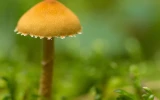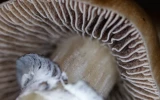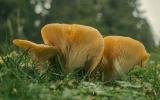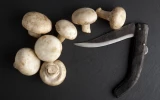Grow Mushroom from Spore (Make Mycelium Yourself)
Mushrooms grow from tiny spores that are invisible to the naked eye. And while they can grow on materials like sawdust, grain, straw, or wood chips, growing them from spores requires specialized lab equipment and expertise in sterile technique. In this article, we'll take you through the steps from germination to fruiting, and give emphasis to sterilizing your tools and equipment.
Gather the spores you need. Make your mycelium culture by mixing the spores with a nutrient-rich substrate such as rice, sawdust, or straw. Once the mycelium has grown enough to cover the substrate, transfer it to a suitable growing environment, such as a terrarium, and watch your mushrooms grow.
Note, however, to never collect spores from unknown or unreliable sources, and to avoid exposure to high concentrations of mushroom spores, which may cause asthma, allergies, and pulmonary diseases. Make sure to wear a mask with a good fit and ventilate your indoor working spaces.
Summary
- Growing conditions such as temperature, humidity, light, and substrate quality can all affect the growth rate of mushrooms.
- Oyster mushrooms can mature in 2–4 weeks, while shiitake and lion's mane mushrooms take 4–6 weeks to mature from spores.
- You can successfully grow mushrooms from spores and make your own mycelium for future harvests, with patience, attention to detail, and a little bit of experimentation.

On this page:
Let's Grow Mycelium from Mushroom Spore
Growing mushrooms from spores involves making mycelium, which is the vegetative part of the fungus that grows underground and feeds on organic matter.
Here's a general outline of the process:
1. Gather spores from a mature mushroom
-
Choose a mature mushroom that has fully opened and has developed gills or pores underneath the cap. The cap should be firm and dry, with no signs of decay.
-
Cover a piece of paper or card with a glass or bowl. The surface should be clean and sterile to prevent contamination.
-
Cut off the stem of the mushroom and gently place the cap, gill-side down, on the spore print surface. You can also gently tap the cap to encourage the spores to drop out.
-
Cover the cap with a glass or bowl and leave it for several hours, or overnight, to allow the spores to release and settle onto the spore print surface.
-
Remove the cap and carefully lift the glass or bowl to reveal the spore print. The spores should appear as a fine powder or pattern on the surface. You can use a sterile tool, such as a scalpel or needle, to scrape the spores off the print and transfer them to a sterile container.
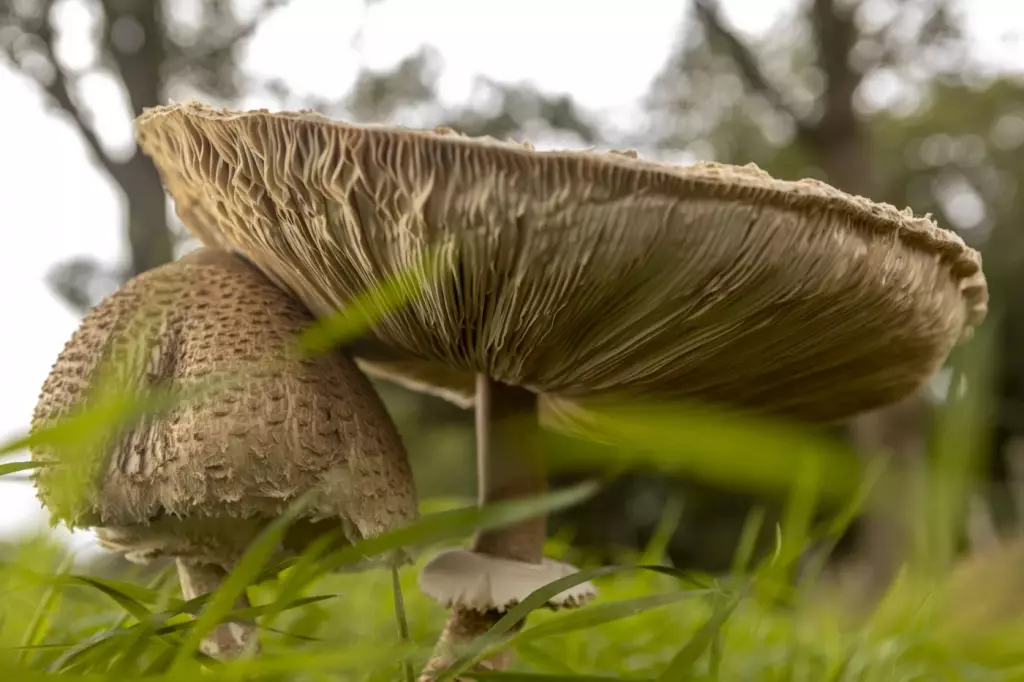
2. Make agar plates for the mixture
You'll need agar powder, malt extract powder, and water. You can find these ingredients at a specialty mushroom supply store or online.
Make sure all equipment is sterilized to prevent contamination. You can use an autoclave, a pressure cooker, or a large pot with a lid to sterilize equipment.
-
In a large pot, mix 20–30 grams of agar powder and 20–30 grams of malt extract powder per liter of water. Stir the mixture until the powder has dissolved.
-
Place the pot over high heat and bring the mixture to a boil, stirring occasionally. Once the mixture has boiled, remove it from the heat and allow it to cool for a few minutes.
-
Pour the mixture into sterile petri dishes, filling them about halfway. Let the agar cool and solidify at room temperature. Avoid placing the petri dishes in the fridge or freezer, as this can cause condensation that can lead to contamination.
-
Once the agar has solidified, sterilize the petri dishes by wrapping them in aluminum foil or placing them in a pressure cooker or autoclave.
3. Inoculate the agar plates using the inoculation tool
Use a sterile tool (such as a scalpel or needle) to transfer a small number of spores to the agar plates. Be careful not to scratch the agar surface or touch the sides of the dish. Seal the plates with tape or parafilm.
4. Incubate the plates in a dark area
Place the agar plates in a warm, dark, and humid location (such as an incubator) and wait for the mycelium to grow. This can take anywhere from a few days to a few weeks, depending on the species.
5. Transfer to grain or sawdust
Once the mycelium has colonized the agar plates, it can be transferred to a sterilized substrate, such as grains or sawdust. This will allow the mycelium to grow and spread, eventually forming a dense network of white threads.
6. Use the mycelium to inoculate the fruiting substrate
Once the mycelium has fully colonized the grain or sawdust, it can be used to inoculate a fruiting substrate, such as a substrate bag or a log.
7. Wait for mushrooms to grow
You may need to wait several weeks or months for the mushrooms to grow, depending on the species. Keep the fruiting substrate in a humid, dark environment, and mist it regularly to maintain moisture.

6 Tips for Selecting the Right Spore
Choose a reputable supplier of mushroom spores
Look for a reputable supplier of mushroom spores to ensure that you are getting high-quality, viable spores.
Consider the mushroom species to get the spores
Different mushroom species have different growing requirements and produce different types of mushrooms. Choose a species that is well-suited to your growing conditions and the desired outcome.
Look for fresh spores
Fresh spores have a higher chance of germinating and growing successfully. Look for spores that have been harvested recently and stored properly.
Check for the viability of the spores
To check if spores are viable, place them on an agar plate and look for signs of growth. Viable spores will germinate and produce mycelium.
Consider the strain of mushrooms
Some mushroom species have multiple strains, each with its own unique characteristics. Research different strains to find one that matches your growing conditions and desired outcome.
Check reviews to determine which spores are good
Look for reviews or recommendations from other growers to see which spores have worked well for them. This can give you an idea of which strains and suppliers to trust.
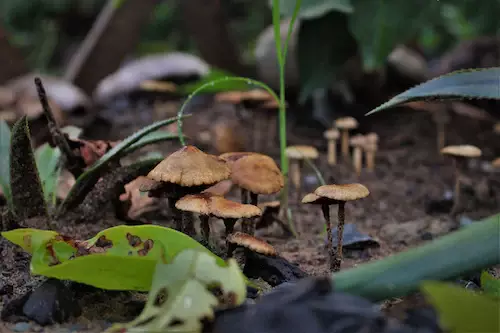
Growth Rate of Common Mushroom Species
The exact timeline for how long each mushroom species takes to grow from spores can vary depending on several factors, such as the specific strain, growing conditions, and cultivation method. However, here are some approximate timeframes for a few common mushroom species:
-
Oyster mushrooms are fast-growing and can mature in as little as 2–4 weeks.
-
Shiitake mushrooms typically take 4–6 weeks to mature from spores.
-
Lion's Mane mushrooms can take 4–6 weeks to grow from spores to mature fruiting bodies.
-
Reishi mushrooms are slow-growing and can take several months to mature from spores.
-
Morel mushrooms are notoriously difficult to cultivate and can take several months to mature from spores, even under optimal conditions.
